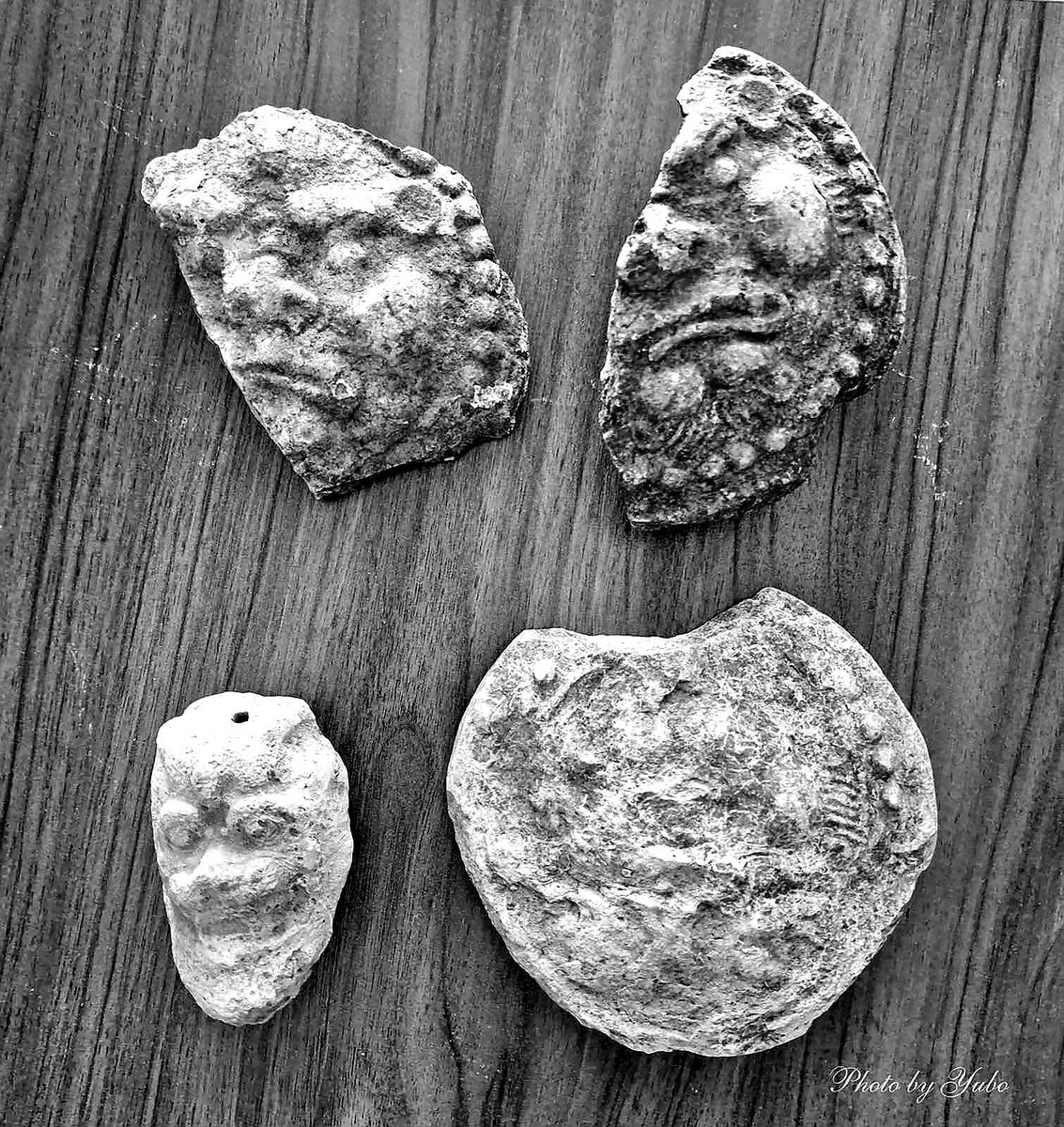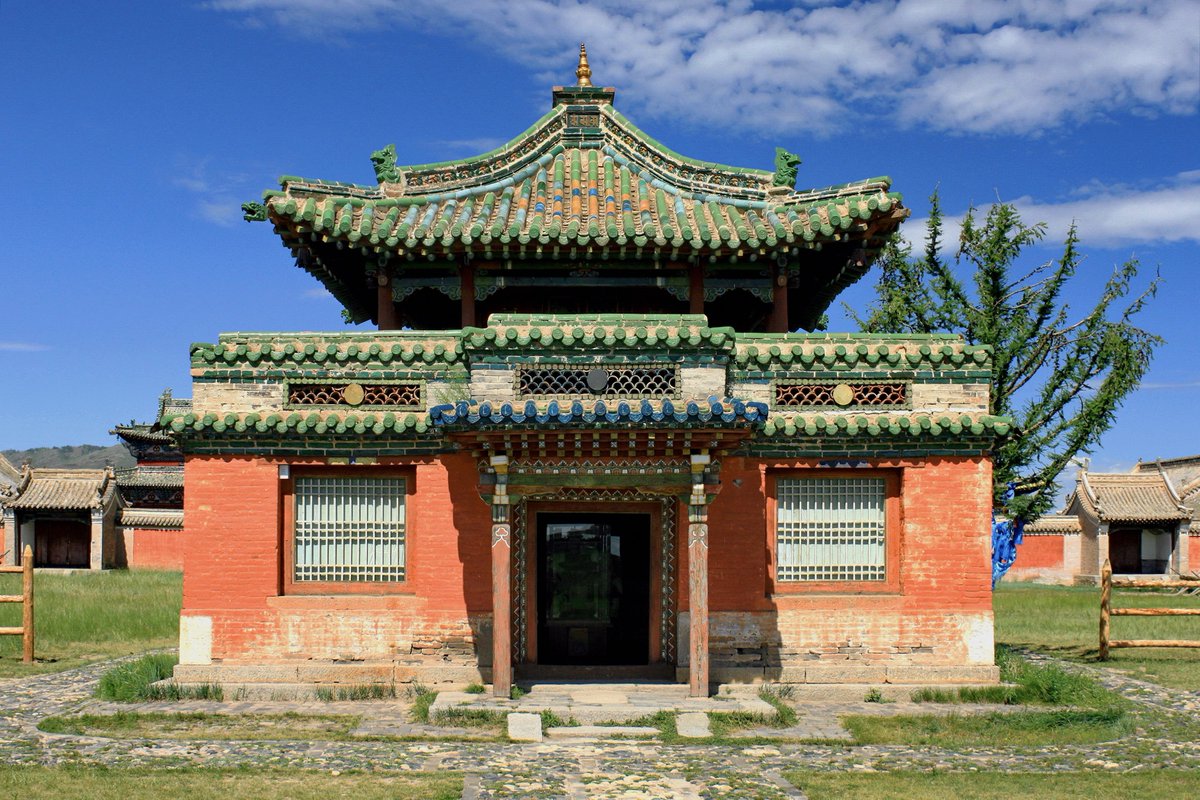Always fun to see someone tweet about a cool find from a Xiongnu burial!
In this case, it’s the ‘Roman’ glass bowl from Gol Mod 2, which is deserving of its own thread 🧵
1/n
In this case, it’s the ‘Roman’ glass bowl from Gol Mod 2, which is deserving of its own thread 🧵
https://twitter.com/the_jackmeister/status/1621579540563742722
1/n
Here’s a different picture of the Gol Mod 2 glass bowl, from “Encyclopaedia Xiongnu” (2013), edited by Tsagaan Törbat:
2/n
2/n

Gol Mod 2 is a large Xiongnu/Khünnü cemetery located just east of the Khanui River as it runs through Öndör-Ulaan county, Arkhangai province.
Locals first directed archaeologists to the site in 2001 (Allard et al., 2002).
3/n


Locals first directed archaeologists to the site in 2001 (Allard et al., 2002).
3/n



Preliminary survey estimated 98 platform* tombs, 250 satellite burials, and 85 independent ring burials (Allard et al., 2002).
*“Platform burial” is one English term denoting the Хүннүгийн язгууртны булш: “Xiongnu aristocratic/noble grave[s]”...
4/n
*“Platform burial” is one English term denoting the Хүннүгийн язгууртны булш: “Xiongnu aristocratic/noble grave[s]”...
4/n

…Archaeologists do not entirely agree on the main Xiongnu tomb typologies: ring vs. platform (terrace, monumental), or ‘commoner’ vs. ‘elite’/ ‘aristocratic’. See Ursula Brosseder’s seminal “Xiongnu Terrace Tombs and Their Interpretation as Elite Burials” (2009).
5/n
5/n

Confusingly, there are TWO famous Xiongnu cemeteries named Gol Mod – and both are in Arkhangai province! Locals also call Gol Mod 2 “Balgasyn Tal”; perhaps it’s not too late to use this name instead?
(Image modified from Honeychurch, 2015)
5/n
(Image modified from Honeychurch, 2015)
5/n

Gol Mod 2 (Balgasyn Tal) sits in relative proximity to two very famous Late Bronze Age sites in the Khanui Valley: the Urt Bulagyn khirigsüür complex (~15km to the NW) and the Jargalantyn Am deerstone and khirigsüür complex (~25km to its NW): facebook.com/photo/?fbid=74….
6/n

6/n


Further north along the Khanui River in Erdenemandal county, archaeologists identified Khar Khul Khaany Balgas, an urban complex likely occupied during the 13th and 14th centuries (Reichert et al., 2022).
7/n

7/n


Back to Gol Mod 2:
by 2013, Ch. Yerool-Erdene’s entry into ‘Encyclopaedia Xiongnu’ lists 452 burials at Gol Mod 2, 107 of which are monumental platform tombs, 81 are round burials with no surface features, and the remaining 264 as satellite ring burials (p. 99).
8/n
by 2013, Ch. Yerool-Erdene’s entry into ‘Encyclopaedia Xiongnu’ lists 452 burials at Gol Mod 2, 107 of which are monumental platform tombs, 81 are round burials with no surface features, and the remaining 264 as satellite ring burials (p. 99).
8/n
Of the monumental platform burials at Gol Mod 2, one has received particular attention: Tomb 1 and its 30 satellite ring burials.
According to Erdenebaatar et al. (2011) and Honeychurch (2015), Tomb 1 is one of the largest known Xiongnu platform burials in existence.
9/n
According to Erdenebaatar et al. (2011) and Honeychurch (2015), Tomb 1 is one of the largest known Xiongnu platform burials in existence.
9/n

Mongol-American Khanui Valley Project excavated at Gol Mod 2 in 2002-2005.
However, the 30th (and largest) ring burial affiliated with Tomb 1 was excavated in 2006 by Ulaanbaatar State University.
Enter the blue glass bowl (Erdenebaatar et al., 2011; Törbat, 2013).
10/n
However, the 30th (and largest) ring burial affiliated with Tomb 1 was excavated in 2006 by Ulaanbaatar State University.
Enter the blue glass bowl (Erdenebaatar et al., 2011; Törbat, 2013).
10/n

Although disturbed prior to excavations, the 30th burial yielded a trove of grave goods: lacquerware, a bronze basin, amber and blue glass beads, fragments of a Chinese bronze mirror, metal coffin decorations, and the ‘Roman’ blue glass bowl (Erdenebaatar et al., 2011).
11/n


11/n



As Jackmeister writes, Erdenebaatar’s 2012 English-language chapter on excavations at Gol Mod 2 attributes the glass bowl to “the 1st mound in the 28th burial” (p. 31). Dr. Diimajav Erdenebaatar was the Mongolian leader of archaeological excavations at Gol Mod 2.
12/n
12/n
However, Dr. Erdenebaatar & his colleagues attributed this glass bowl to “burial 30” in their 2011 conference volume. Also, both Honeychurch (Inner Asia and the Spatial Politics of Empire: 2015) & Encyclopaedia Xiongnu (2013) do the same.
13/n
13/n

What about the glass bowl? Is it Roman or not? Erdenebaatar et al. are confident in classing the blue glass bowl as Roman based on stylistic comparison to known Roman glassware (2011: 311). Ch. Yerööl-Erdene (Encyclopaedia Xiongnu, 2013) agrees.
14/n
14/n

Honeychurch displays a bit more skepticism:
“a glass bowl which, on the basis of its style and make, originated in the Mediterranean workshops of Rome...The glass bowl was found intact and has been identified as a Roman ribbed bowl (Zarte Rippenschale)...
15/n
“a glass bowl which, on the basis of its style and make, originated in the Mediterranean workshops of Rome...The glass bowl was found intact and has been identified as a Roman ribbed bowl (Zarte Rippenschale)...
15/n

"...In shape, size, and manufacture, it bears a strong resemblance to the blue and white ribbed bowl of the Roman Glass Collection at the Corning Museum of
Glass (Whitehouse 2001: 203). The museum piece dates between the early and mid-first millennium AD..."
16/n
Glass (Whitehouse 2001: 203). The museum piece dates between the early and mid-first millennium AD..."
16/n

"...which is consistent with current assessments of platform burial site chronology. However, researchers have yet to publish the results of compositional
analysis of the glass or provide absolute dating for the burial context itself" (Honeychurch, 2015: 281).
17/n
analysis of the glass or provide absolute dating for the burial context itself" (Honeychurch, 2015: 281).
17/n
While the likely-Roman blue glass bowl is an important find from Gol Mod 2 (Balgasyn Tal), the site has taught us much more about the Xiongnu/Khünnü and their empire, even though hundreds of its tombs have yet to be excavated: montsame.mn/mn/read/298188
18/n

18/n


• • •
Missing some Tweet in this thread? You can try to
force a refresh











































